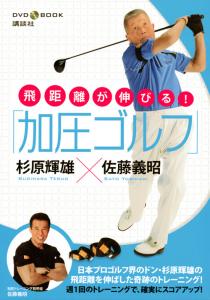 "My knee popped," recalled Josh Saunders, then a Goal Keeper with US Major League Soccer team, Real Salt Lake. "When I came down, I knew the injury was bad, but I had no idea what was to come." Saunders fears were confirmed - a torn left ACL, a bad, common football injury. However, Saunders injury became more than the typical case - it became life threatening. Two weeks after surgery, Saunders not only contracted a serious bone infection, caused by the bacterium streptococcus, but also a candida fungus.
"My knee popped," recalled Josh Saunders, then a Goal Keeper with US Major League Soccer team, Real Salt Lake. "When I came down, I knew the injury was bad, but I had no idea what was to come." Saunders fears were confirmed - a torn left ACL, a bad, common football injury. However, Saunders injury became more than the typical case - it became life threatening. Two weeks after surgery, Saunders not only contracted a serious bone infection, caused by the bacterium streptococcus, but also a candida fungus."It was no longer about my return to football," Saunders said. "It was about surviving."
Now, the New York City FC goalkeeper says he is lucky to be alive and to still have his leg. Saunders credits his complete recovery to US Olympic Ski Team doctor and Sport Scientist, Dr. James Stray-Gundersen, and his cutting edge recovery, fitness, and strength protocols - the Anti Gravity Treadmill and KAATSU BFR Training.
Saunders was looking for anything to get him back in the goal. He had lost significant weight, and more importantly, muscle mass. Saunders met Dr. Stray-Gundersen who elevated his fitness and built his strength with KAATSU, very quickly.
"I had never heard of KAATSU or BFR before, but Stray-Gundersen showed me results from his top skiers, and I was all for it. He applied 30 minute KAATSU sessions, 5 days per week and in a matter of a few sessions, I had significant increases in strength, and my quad size increased," said Saunders. "I got that same fatigue feeling in my muscles, with no heavy weights. It was amazing."
KAATSU was invented by Dr. Yoshiaki Sato in 1966. He experimented for 7 years before he formalised his protocols and built up a following. He was recognized by the Japanese Olympic Committee in 1992 and has since started to work with the Chinese.
But Dr. Sato does not speak English and never traveled overseas so KAATSU remained hidden within Japan.
"I heard about KAATSU from Harvard researchers who had visited Japan," recalls Dr. Stray-Gundersen. "But we never looked into KAATSU until one of our medalists went down with a severe injury a month before the 20114 Olympics.
We rehabilitated him using KAATSU the original BFR exclusively, and he raced in 28 days, and we became believers," emphasized Stray-Gundersen.
MLS Defender, Kuami Watson-Siriboe, another ACL tear victim, started the same KAATSU program. The effects were shockingly immediate. "I quickly recovered doing KAATSU 3-point exercises and the KAATSU Cycle," says Watson-Siriboe.
"In all applications, we always assess capillary refill and responses throughout recovery - same as Dr. Sato has done since the 1970s," said Dr. Stray-Gundersen.
"The KAATSU equipment allows me to identify the optimal pressure each time which is critical in safety and effectiveness as we fill normally unused capillaries and engage more muscle fibers - we want to achieve the 'fatigue' in the muscle so that the physiological cascade to provide GH, occurs. Simply put, you cannot get beneficial results, if you do not use proper protocols, equipment, and safety checks required with blood flow moderation training used with KAATSU. As always, the athlete safety and recovery is our first concern and KAATSU researched system sets the standard," said Dr. Stray-Gundersen.
Saunders said, "I couldn't believe the results at first, but I had faith in Dr. Stray-Gundersen and KAATSU, and I just wanted to get back on track and as fast as the skiers did. I am now stronger, faster and quicker than I was before my injury."
That he did - Josh Saunders NYFC Player of the Month May 2015.
Copyright © 2015 by KAATSU Global





